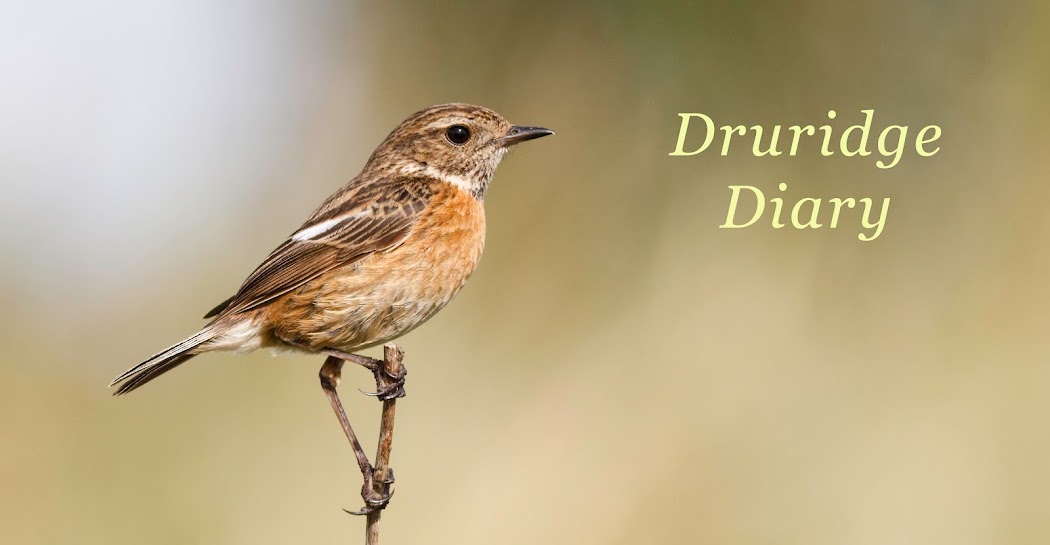Sedate = boring. Bring back the easterlies please.
It felt like summer at Druridge yesterday morning. There were lots of butterflies out, mostly red admirals and speckled woods with a single dark-green fritillary which must have been off a second hatching?
 |
| Red admiral on whitebeam berries |
 |
| Speckled wood |
 |
| These drake gadwall thought it was spring - chasing a duck around for five minutes or more. |
There was a hint of winter though, pink-footed geese are back.
 |
| Pink-foots, headed south |
There was an incredible 71 divers in the bay, but all I could pick out was red-throats. In amongst them were five red-breasted mergansers and a great-crested grebe.
In common with elsewhere, Druridge has had an influx of little gulls, not an impressive count in comparison with other sites, but there were about 12-15 which is good for Druridge. Most of them were distant, with a feeding frenzy of bigger gulls, well offshore.
I had a really frustrating episode with a gull, when I picked it up in my scope, it was heading south and it didn't deviate from it's course, it didn't bank or turn once, just kept on going. What I saw, and its jizz, was good for a juvenile sabines, but I will never know.
At dusk, the two juvenile kestrels that have been hanging about were joined by a third. I got a couple of pics before it go too dark, after I abandoned photography due to bad light, they put on a great display over the dunes in front of me, tussling with each other.
 |
 |
| juvenile kestrels at dusk |









